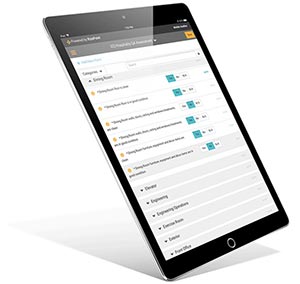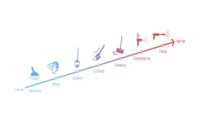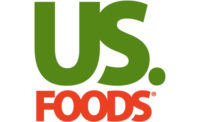The COVID-19 pandemic has created an unprecedented situation for food processors.
The coronavirus that causes COVID-19, an extremely contagious pneumonia-like illness, has taken over our lives, and many people have either self-quarantined, been mandated to shelter in place or at the very least have been practicing social distancing—the latest term in our vernacular, meaning to keep at least 6 feet apart. While schools have moved to e-learning, “non-essential” businesses have closed their doors and so many other industries are able to work remotely, the food and beverage industry is facing more demand than ever.
Article Index:
The employees on the front line need to remain safe and healthy to continue to bring the food and beverage supply to the masses. In addition to worker safety as it relates to COVID-19, it is also important to remember that preventing slips and falls, using proper personal protective equipment (PPE) and protecting against foodborne pathogens are also safety issues that pertain to workers in food and beverage processing plants.
Don’t Get Tripped Up
By their very nature, food and beverage processing plants often expose workers to wet floors or spills and clutter, which can lead to slips, trips, falls and other possible injuries.
According to Dean Wiltse, CEO at RizePoint, a mobile audit platform supplier, employers can help reduce the risk for slips, trips and falls with consistent training, auditing and tracking of employee safety standards. He says that avoidance tactics can help reduce employee risk as well as implement continuous improvements over time.
“Reports generated can help show employers which departments or facilities are underperforming to set standards, so managers can focus corrective attention where it’s needed most. Historical data provides insights to how communications and/ or training can be improved for better results,” he says.
The Occupational Safety and Health Administration offers a number of resources to help processors to understand, prevent and mitigate possible slip, trip and fall injuries.
According to an OSHA spokesperson, “It is important that facilities implement a comprehensive safety and health program (see www.osha.gov/shpguidelines) to identify and correct hazards that could lead to slips, trips, falls and other injuries.”
“OSHA’s Walking-Working Surfaces standards require employers to keep all walking-working surfaces clean, orderly and in a sanitary condition,” says the OSHA spokesperson. “Walking-working surfaces should be kept dry (to the extent feasible) and free of hazards, such as sharp or protruding objects, loose boards, corrosion, leaks, spills, snow and ice. Employers must inspect walking-working surfaces regularly to ensure they are safe.”
To reduce the possibility of a slip, trip or fall, OSHA suggests the following possible solutions:
- Keep floors clean and dry [29 CFR 1910.22(a)(2)]. In addition to being a slip hazard, continually wet surfaces promote the growth of mold, fungi and bacteria that can cause infections.
- Provide warning signs for wet floor areas [29 CFR 1910.145(c)(2)].
- Where wet processes are used, maintain drainage and provide false floors, platforms, mats or other dry standing places where practicable, or provide appropriate waterproof footgear [29 CFR 1910.141(a)(3)(ii)].
- Walking-Working Surfaces Standard requires [29 CFR 1910.22(a)(1)]: Keep all places of employment clean and orderly and in a sanitary condition.
- Keep aisles and passageways clear and in good repair, with no obstruction across or in aisles that could create a hazard [29 CFR 1910.22(a)]. Provide floor plugs for equipment, so power cords need not run across pathways.
- Keep exits free from obstruction. Access to exits must remain clear of obstructions at all times [29 CFR 1910.36(b)(4)].
“Poor lighting is often a contributing factor in same-level fall injuries. An effective safety and health program should include assessing whether the facility has proper lighting. Identifying and correcting poorly lit areas can ensure the safety of workers and others navigating throughout the facility,” OSHA’s spokesperson notes.
The agency offers other recommended good work practices, such as to ensure spills are reported and cleaned up immediately and to use no-skid waxes and surfaces coated with grit to create nonslip surfaces in slippery areas, such as toilet and shower areas. Waterproof footgear also can decrease slip and fall hazards.
OSHA also recommends the following when it comes to the working environment:
- Use only properly maintained ladders to reach items. Do not use stools, chairs or boxes as substitutes for ladders.
- Re-lay or stretch carpets that bulge or have become bunched to prevent tripping hazards.
- Aisles and passageways should be sufficiently wide for easy movement and should be kept clear at all times. Temporary electrical cords that cross aisles should be taped or anchored to the floor.
- Eliminate cluttered or obstructed work areas.
- Medical station countertops or medication carts should be free of sharp, square corners.
- Use prudent housekeeping procedures such as cleaning only one side of a passageway at a time, and provide good lighting for all halls and stairwells, to help reduce accidents.
- Provide adequate lighting, especially during night hours.
- Instruct workers to use the handrail on stairs, to avoid undue speed, and to maintain an unobstructed view of the stairs ahead of them, even if that means requesting help to manage a bulky load.
- Eliminate uneven floor surfaces.
- Promote safe work in cramped working spaces. Avoid awkward positions, and use equipment that makes lifts less awkward.
From Head to Toe
When it comes to PPE, Wiltse says that in general, employers can deploy audits and track results to ensure that PPE measures—such as hearing protection or cut-resistant gloves, for example— are followed.
“Online tools allow managers to conduct audits across departments and/or locations, track compliance, communicate consistently about standards, gather ongoing insights and implement improvements accordingly,” he says.
According to OSHA, all PPE should be safely designed and constructed, and it should be maintained in a clean and reliable fashion. Additionally, the equipment should fit comfortably, encouraging worker use.
Wiltse recalls an example when evaluations using online tools revealed that not all employees were utilizing cut-resistant gloves provided to employees at a food company. The company had provided one size of cut-resistant gloves to all members of its team.
“Researching this issue, the employer discovered that the primary reason employees weren’t wearing the gloves was that they didn’t fit properly,” he says. “This information allowed the company to adjust their approach accordingly. To increase adoption of this safety guideline, the employees were provided with three sizes of the gloves instead of one. With better fitting, more comfortable gloves, the compliance rate rose dramatically. The employees wore the gloves, significantly reducing injuries.”
Referring to this example, Wiltse says, “Regardless of the safety program, knowledge is power. When an employer has more information about safety protocols—and employee adoption of the protocols—they can make better, more informed decisions. In this case, they dramatically increased compliance by making a simple switch and offering several sizes of safety gloves. This concept can be applied more widely for even greater results.”
In regard to foot protection, OSHA regulations require that employees wear protective footwear if there is a danger of foot injuries from falling or rolling objects, objects piercing the sole, or exposure to an electrical hazard. Employers are also required to train each worker required to use PPE to know when it is necessary; what kind is necessary; how to properly put it on, adjust, wear and take it off; the limitations of the equipment; and proper care, maintenance, useful life and disposal of the equipment.
Whether it’s encouraging employees to utilize hearing protection equipment, providing best practices to avoid slips and falls, ensuring employees are using machinery and equipment properly or implementing numerous other safety protocols, Wiltse says companies are looking for easy, effective ways to maximize safety in the workplace.
“Increasingly, companies within the food and beverage industry…are relying on interactive digital solutions to successfully make this happen. These innovative online solutions offer tremendous benefits, including giving employers a clearer view of employee behaviors,” he says.
Through auditing, tracking and monitoring tools, employers get a more robust view of whether employees are complying with safety practices. If not, he says it allows them to take immediate corrective actions to maximize safety and minimize risks.
Preventing Foodborne Pathogen Spread
FDA’s long-standing good manufacturing practices require food companies to implement and follow proper cleaning and sanitizing procedures to prevent cross-contamination and foodborne illness, which can occur when hazardous microorganisms contaminate food products. More recently, FSMA required the use of preventive controls for foodborne hazards, and these can include sanitation controls to prevent hazards such as foodborne pathogens from employee handling or the environment.
“Many of the foodborne illness outbreaks we are seeing can be prevented by greater focus on sanitation practices in food plants,” says Jenny Scott, senior adviser, office of food safety, FDA.
If cleaning and sanitizing are not properly conducted, chemicals that could make people sick could contaminate food produced on that equipment. However, a more common cause of foodborne illness is the presence of foodborne pathogens in food products.
Foodborne pathogens are any microorganisms that can cause illness in humans. These include viruses, bacteria, mold and parasites—bacteria are of particular concern since they can multiply rapidly in many food products under suitable conditions. According to FoodSafety.gov, there are more than 250 known pathogens that can be spread through food handling and consumption. These pathogens can be naturally present in the foods; for example, salmonella is often present in chickens’ digestive tracts and contaminates the chickens during processing. They may also be introduced to food during growing, harvesting, transporting, storing, handling, processing, packaging and serving. Food products can be contaminated by contact with contaminated surfaces or handling by a sick or unhygienic person.
Personal Hygiene
There are many safe work practices to prevent infections and the spread of foodborne pathogens in food processing, including providing workers with appropriate PPE, training on biological hazards, recognition of symptoms and hand hygiene practices, according to OSHA.
When it comes to personal hygiene, the FDA’s CGMP requirements for personnel state that the management of the establishment must take reasonable measures and precautions to ensure the following:
a) Disease control. Any person who, by medical examination or supervisory observation, is shown to have, or appears to have, an illness, open lesion, including boils, sores or infected wounds, or any other abnormal source of microbial contamination by which there is a reasonable possibility of food, food-contact surfaces or food-packaging materials becoming contaminated, must be excluded from any operations that may be expected to result in such contamination until the condition is corrected, unless conditions such as open lesions, boils and infected wounds are adequately covered (e.g., by an impermeable cover). Personnel must be instructed to report such health conditions to their supervisors.
b) Cleanliness. All persons working in direct contact with food, food-contact surfaces, and food-packaging materials must conform to hygienic practices while on duty to the extent necessary to protect against allergen cross-contact and against contamination of food. The methods for maintaining cleanliness include:
- Wearing outer garments suitable to the operation in a manner that protects against allergen cross-contact and against the contamination of food, food-contact surfaces or food-packaging materials.
- Maintaining adequate personal cleanliness.
- Washing hands thoroughly (and sanitizing if necessary to protect against contamination with undesirable microorganisms) in an adequate handwashing facility before starting work, after each absence from the work station, and at any other time when the hands may have become soiled or contaminated.
- Removing all unsecured jewelry and other objects that might fall into food, equipment or containers, and removing hand jewelry that cannot be adequately sanitized during periods in which food is manipulated by hand. If such hand jewelry cannot be removed, it may be covered by material that can be maintained in an intact, clean and sanitary condition and that effectively protects against the contamination by these objects of the food, food-contact surfaces or food-packaging materials.
- Maintaining gloves, if they are used in food handling, in an intact, clean and sanitary condition.
- Wearing, where appropriate, in an effective manner, hair nets, headbands, caps, beard covers or other effective hair restraints.
- Storing clothing or other personal belongings in areas other than where food is exposed or where equipment or utensils are washed.
- Confining the following to areas other than where food may be exposed or where equipment or utensils are washed: eating food, chewing gum, drinking beverages or using tobacco.
- Taking any other necessary precautions to protect against allergen cross-contact and against contamination of food, food-contact surfaces or food-packaging materials with microorganisms or foreign substances (including perspiration, hair, cosmetics, tobacco, chemicals and medicines applied to the skin).
Cleaning and Sanitizing
Effective cleaning and sanitizing procedures help reduce a facility’s risk of spreading foodborne illness and accidentally distributing contaminated food products. Cleaning means removing “soils”— food residue, oils, grease and dirt—from a surface. Soils can harbor bacteria and other microorganisms and can physically block sanitizing chemicals from reaching the surface. After proper and effective cleaning is complete, surfaces then should be sanitized, reducing the number of hazardous bacteria on a surface to levels that regulators consider safe. Totes and bins, equipment, work surfaces and machinery are not properly clean until they have been both cleaned and sanitized.
For a comprehensive article about cleaning and sanitizing written by Richard F. Stier, Food Engineering’s safety columnist, see the January 2020 edition. In it, Stier covers the many different ways to clean and sanitize equipment, including the use of clean-in-place (CIP) systems, foaming, clean-out-of-place (COP), spraying, high pressure and manual systems. He also reminds processors that they must develop, document, implement and maintain procedures for cleaning each and every piece of equipment, floors, walls, ceilings, overheads, loading docks, utensils, etc. on their master cleaning schedule.
Reiterating that knowledge is power in the safety game, employers must ensure that the workers doing the cleaning and sanitizing have been properly educated on the documented procedures and fully understand that they must follow the procedures as written.
Scott says, “FDA requires that all individuals engaged in manufacturing, processing, packing or holding food receive training in the principles of food hygiene and food safety, including the importance of employee health and personal hygiene, as appropriate to the food, the facility and the individual’s assigned duties.”
RizePoint’s Wiltse says that food and beverage manufacturers should regularly deploy audits to ensure cleaning and sanitation programs are followed and that correct products are utilized at all of their locations and for all of their processes.
“There are sophisticated online tools available to food and beverage businesses to help them audit, track assess and take corrective actions, as necessary,” he says. “These tools are user-friendly, affordable and accessible for organizations of all sizes, and can help maximize safety protocols and practices in a cost-effective, accurate, accessible and easy-to-manage way.”
Effective cleaning and safety programs should be developed and maintained with the employee in mind.
“Employees should be instructed not only in how to clean and sanitize but also why certain procedures in the program are important to ensuring the safety of the food manufactured,” says FDA’s Scott.
Wiltse adds that programs should be clear, with easy to understand guidelines.
“Proper cleaning and safety equipment must be provided, and employees should understand expectations around these products,” he says. “For instance, when do they need to use hearing protection, when and how should specific cleaning products be utilized, how do they properly dispose of cleaning products or other potentially hazardous materials, what safety mechanisms need to be used around heavy machinery and equipment, etc.? Employers must provide ongoing training and set clear expectations about safety. It’s not enough to say, ‘follow these guidelines.’ Explain why these safety protocols are in place and why it’s critical for all employees to follow them—every day, with every shift.” Employees are much more likely to comply when they understand the reasons behind the rules (e.g., to keep everyone safe).
It is also a good idea to empower employees to take responsibility for their own health and safety—and for the health and safety of those around them. According to Scott, “Employees need to understand why it is important to report illnesses to supervisors so they can be assigned to duties that do not involve handling food—and not be a source of making someone sick.”
Also, require them to attend safety trainings on an ongoing basis to make sure proper protocols remain top-of-mind, adds Wiltse. “Remind employees to follow the guidelines and utilize the proper equipment for all their tasks,” he says. “Explain why compliance is important so they’re invested and engaged in following the rules.”
For more information:
FDA, www.fda.gov
U.S. government food safety site, www.foodsafety.gov
OSHA, www.osha.gov
RizePoint, www.rizepoint.com







